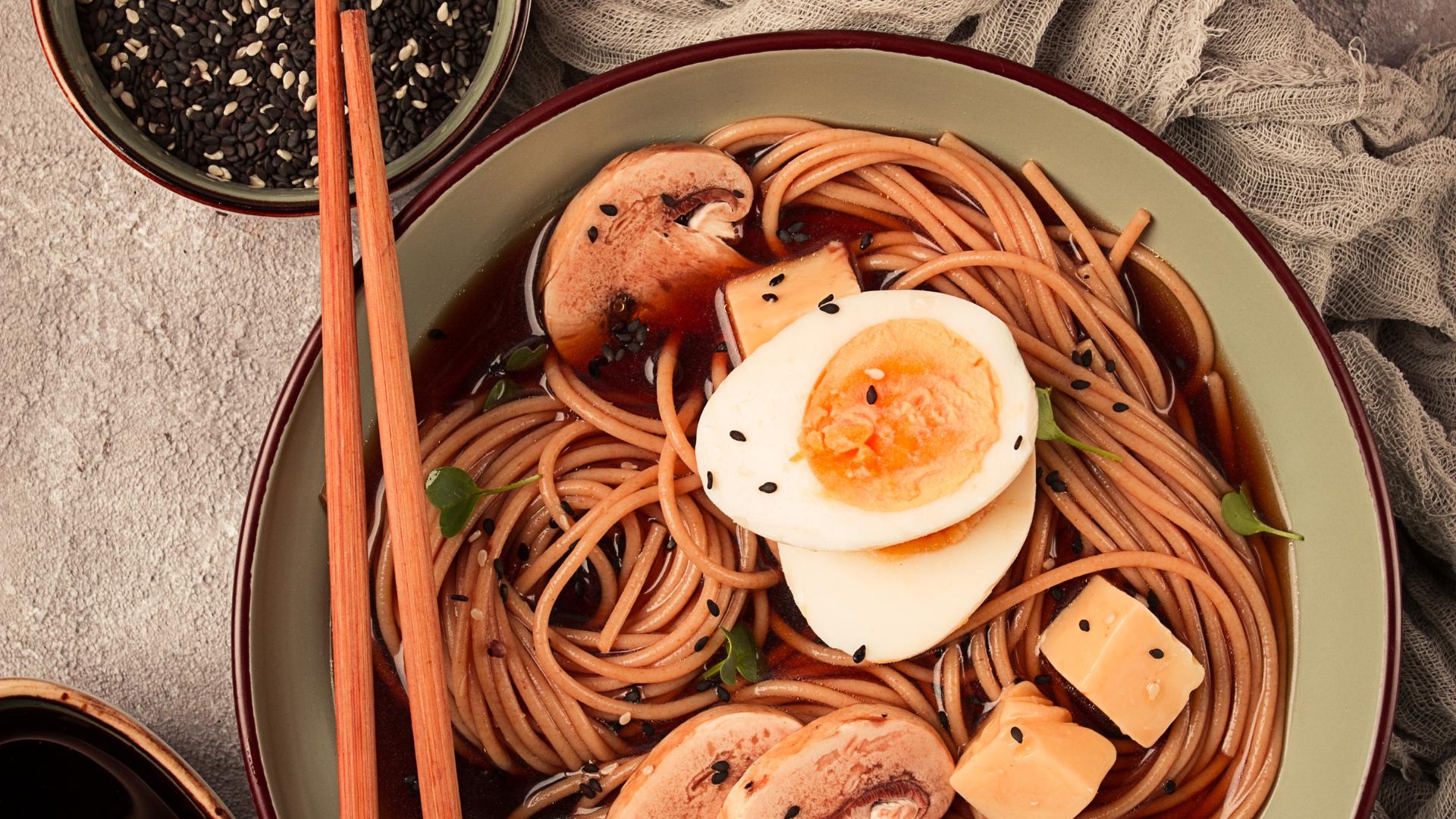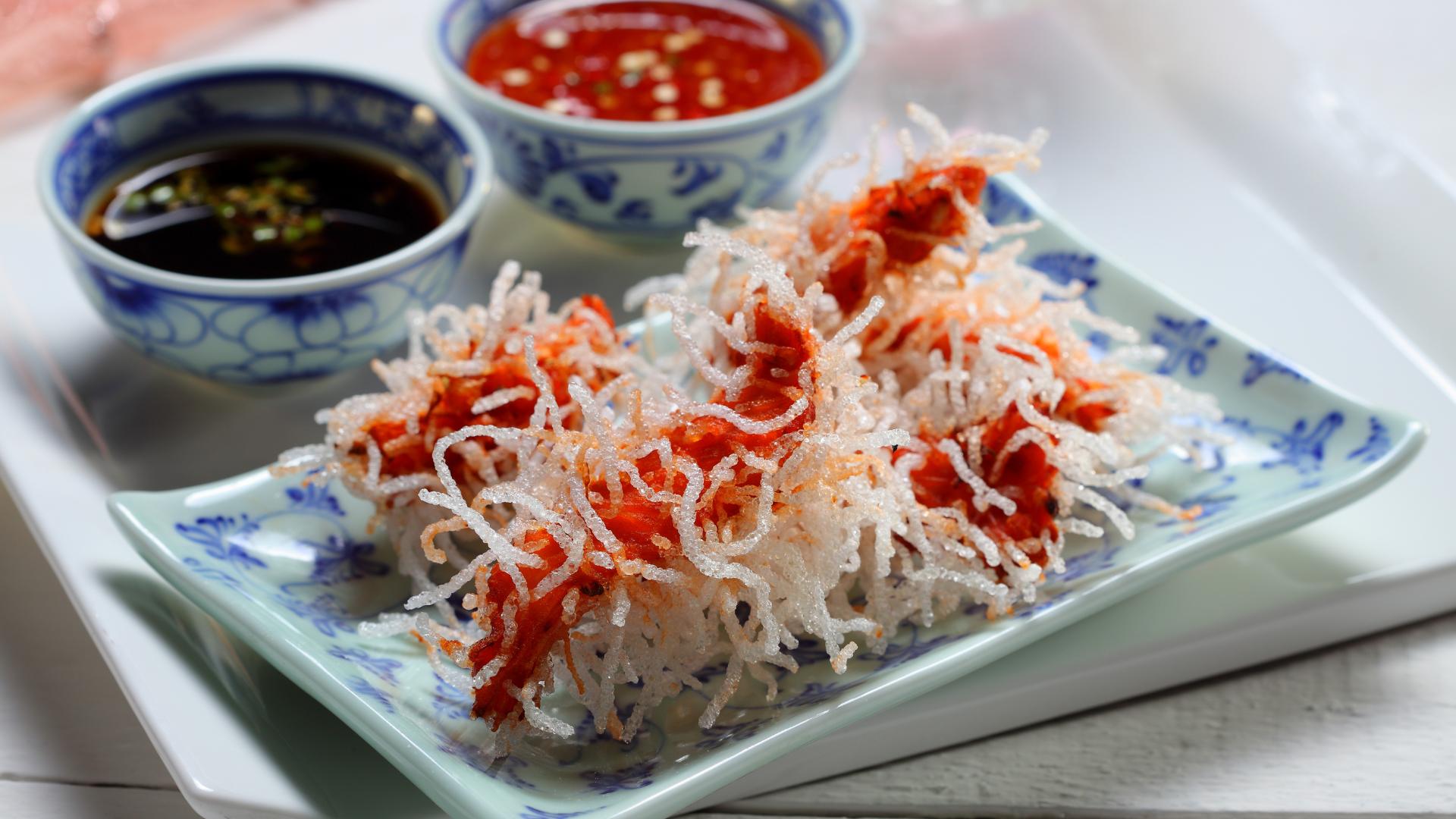As we venture into the vibrant world of Asian cuisine, we find ourselves captivated by a dance of balanced flavors that awaken the palate. Among these, the interplay of sweet and salty elements stands out, offering a symphony of tastes that has captured the hearts and taste buds of food lovers worldwide. From the umami-rich soy sauces of Japan to the sweet-savory delights of Chinese dishes, we embark on a culinary journey that promises to reveal not only the complexity of flavors but also the cultural stories behind them.
- 1 The Foundation of Flavor: Ingredients and Cooking Techniques
- 2 Chinese Cuisine: Harmony of Sweet and Savory
- 3 Japanese Cuisine: A Symphony of Taste
- 4 South Asian Cuisine: A Burst of Colors and Flavours
-
5
FAQ
- 5.1 What are some popular sweet and salty dishes in Asian cuisine?
- 5.2 Why is the combination of sweet and salty flavors so prevalent in Asian cooking?
- 5.3 How can I incorporate sweet and salty flavors into my own cooking?
- 5.4 Are there any health considerations when enjoying sweet and salty Asian dishes?
- 5.5 Can sweet and salty Asian dishes be adapted for different dietary preferences?
The Foundation of Flavor: Ingredients and Cooking Techniques
Every great dish begins with carefully chosen ingredients. In the realm of Asian cuisine, this truth holds a profound weight. The flavors we savor in dishes like Chinese sweet and sour pork or Japanese teriyaki chicken are crafted from pantry staples full of flavor potential. Soy sauce, for instance, is an essential component that introduces a depth of umami to many recipes. This fermented concoction, made from soybeans, wheat, salt, and a specific mold, is a testament to the intricate artistry of Asian cooking.
Meanwhile, other vital ingredients such as ginger, garlic, and scallions form the aromatic base upon which these flavors are built. The sweetness is often derived from natural sources like honey or sugar, which balance the savory notes through a harmonious blend.
The cooking techniques employed are as varied as the flavors themselves. Stir-frying allows for quick, high-heat cooking that seals in the flavors and nutrients, while braising brings out a richness that transforms simple cuts of meat into hearty, flavorful dishes. Each method is a testament to the innovation and adaptability of Asian culinary arts.
Chinese Cuisine: Harmony of Sweet and Savory
When we think of Chinese cuisine, images of delectable dishes such as sweet and sour pork or Peking duck come to mind. The Chinese have mastered the art of balancing sweet and savory flavors, as seen in countless traditional recipes.
A prime example is the iconic sweet and sour pork—a dish that showcases the duality of flavors through a combination of sugar, vinegar, and soy sauce. Each bite delivers a rich and satisfying experience that feels both indulgent and comforting.
The culinary philosophy underpinning these dishes often revolves around the concept of Yin and Yang. The sweet elements, often derived from sugar or honey, counterbalance the saltiness and savoriness of fermented sauces like soy or hoisin. This philosophy ensures that no flavor overpowers another, achieving perfect equilibrium in every food item.
Moreover, the use of natural ingredients like fruit juices or zests further enhances these flavors. Dishes like lemon chicken or orange beef exemplify this, as the citrus flavors provide a fresh counterpoint to the savory meat.
Japanese Cuisine: A Symphony of Taste
Japanese cuisine offers a distinctive approach to blending flavors, with an emphasis on simplicity and the natural taste of each component. The flavor profile here distinctly highlights umami, which is celebrated in various foods such as miso soup, sushi, and sashimi.
One of the key ingredients in Japanese cooking is soy sauce, renowned for its ability to elevate any dish with its unique flavor. Combined with mirin—a sweet rice wine—Japanese chefs craft a balanced sauce that graces marinades, glazes, and dressings.
Teriyaki is a prime example of this sweet-savory balance. Chicken, beef, or fish is marinated in a mixture of soy sauce, mirin, and sugar, then grilled to perfection. The result is a dish that delivers a rich and harmonious blend of flavors that linger on the palate.
Beyond sauces, Japanese cuisine also relies on ingredients like seaweed, dashi, and miso to introduce umami notes. These foundational elements support flavors such as sake-infused marinades or sweet pickles, providing layers of taste that are both complex and nourishing.
South Asian Cuisine: A Burst of Colors and Flavours
Our exploration would be incomplete without acknowledging the vibrant and diverse culinary landscape of South Asia. Here, food is more than sustenance; it is a celebration of life, full of rich flavors and colorful presentations.
Indian cuisine offers a vast array of dishes where sweet and savory notes coexist in harmony. Take, for example, Punjabi chole, a dish where chickpeas are simmered in a sauce with tomatoes, onions, and an assortment of spices. Its richness is enhanced by tamarind or amchur (dried mango powder), which introduces a sweet tang that counters the spice.
The ingredients used in South Asian cuisine—such as coconut, tamarind, and jaggery—play pivotal roles in creating a beautiful tapestry of flavors. Coconut milk adds a creamy sweetness to curries, while tamarind offers a tangy counterbalance.
Similarly, Sri Lankan cuisine showcases the unique use of spices and natural ingredients to achieve a balanced flavor profile. From sweet and mild coconut sambol to spicy, savory curries, each dish masterfully blends opposing flavors while respecting the integrity of each ingredient. Our journey through Asian cuisine has illuminated the artistry and precision behind its flavors. The dance of sweet and salty within Asian foods is not merely about taste; it’s about crafting experiences that resonate with cultural history and personal memories.
From the savory depths of Chinese sauces to the sweet notes in Japanese glazes and the rich tapestries of South Asian spices, these flavors invite us to slow down and savor each bite. The symphony of tastes we encounter in Asian cuisine is a testament to the region’s dedication to balance, harmony, and, most importantly, the joy of sharing a meal.
As we close this exploration, let us remember that the true beauty of Asian cuisine lies not in its individual components but in the harmonious blend of flavors that brings people together, fostering connections through the universal language of food.
FAQ
What are some popular sweet and salty dishes in Asian cuisine?
Asian cuisine offers a variety of sweet and salty dishes that are both unique and flavorful. Some popular examples include Teriyaki Chicken from Japan, which combines the sweetness of sugar or honey with the saltiness of soy sauce. In Chinese cuisine, Sweet and Sour Pork balances the tangy sweetness of pineapple with the savory depth of soy sauce. Thai cuisine features dishes like Pad Thai, where tamarind paste introduces a sweet element that complements the salty fish sauce.
Why is the combination of sweet and salty flavors so prevalent in Asian cooking?
The combination of sweet and salty flavors in Asian cooking is deeply rooted in the region’s culinary history and culture. This flavor profile is designed to create a harmonious balance that enhances the overall taste experience. The sweet elements help to mellow out the intensity of the salty ingredients, leading to a more complex and satisfying dish. This balance is often achieved through the use of sauces, marinades, and spices that blend these contrasting flavors seamlessly.
How can I incorporate sweet and salty flavors into my own cooking?
Incorporating sweet and salty flavors into your cooking can be achieved through the use of various ingredients and techniques. Start with sauces like soy sauce, oyster sauce, or fish sauce for the salty component and balance it with honey, sugar, or fruits like pineapple or mango for sweetness. Experiment with adding a touch of sweetness to savory dishes, such as using a sweet glaze on grilled meats or adding a pinch of sugar to a stir-fry. Taste as you go to achieve the perfect balance.
Are there any health considerations when enjoying sweet and salty Asian dishes?
While sweet and salty Asian dishes can be delicious, moderation is key to maintaining a healthy diet. These dishes often contain high levels of sodium and sugar, which can contribute to health issues such as high blood pressure and increased risk of chronic diseases if consumed in excess. It’s important to balance these dishes with plenty of vegetables and lean proteins, and to watch portion sizes. Opt for homemade versions where you can control the amount of salt and sugar used.
Can sweet and salty Asian dishes be adapted for different dietary preferences?
Yes, many sweet and salty Asian dishes can be adapted to fit various dietary preferences. For those following a vegetarian or vegan diet, you can replace meat with tofu, tempeh, or a variety of vegetables. Use alternative sweeteners like agave nectar or maple syrup for a healthier twist. Gluten-free soy sauce or tamari can substitute for traditional soy sauce. By making these adjustments, you can enjoy the rich flavors of Asian cuisine while adhering to your dietary needs.

